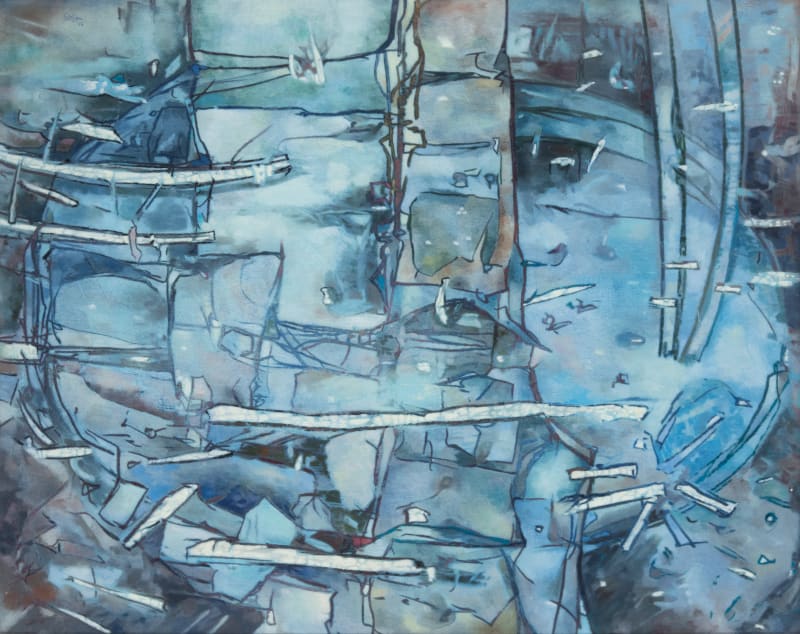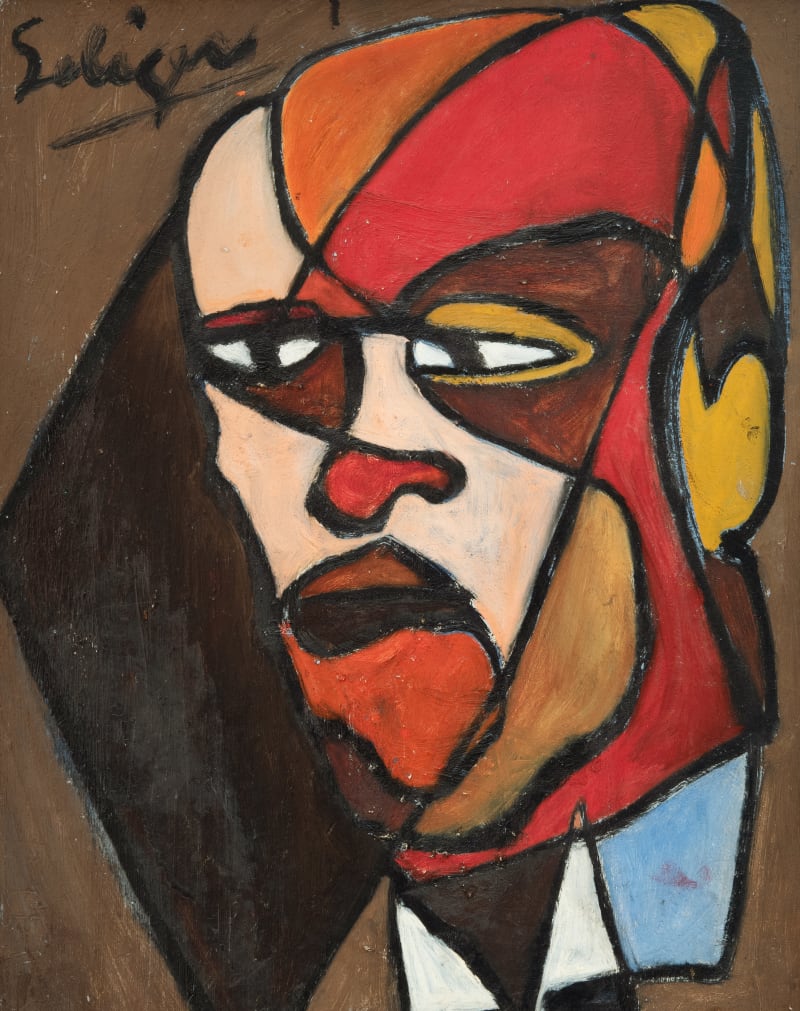
My works, even when most abstract, reflect the natural world. Strata of the earth, forms relating to botany and biology and the ocean depths, all figure in the imagery of my work, no matter how abstract.
A painter of small-scale abstractions, Charles Seliger (1926-2009) associated with Abstract Expressionists in the 1940s and 1950s and shared their practice of automatism as adopted from the Surrealists. Like many of his contemporaries searching for a universal language of abstraction in the post-war period, Seliger turned to prehistoric ideas, symbols, and myth as a wellspring of imagery. Sam Hunter, reviewing the artist’s 1948 exhibition at Carlebach Gallery for the New York Times, commented that the artist’s work “carries the stamp of unborn mysteries and primitive rite.” (1) Yet unlike those of his fellow Abstract Expressionists, the artist’s paintings conjure elaborate, geologic fantasy worlds inspired by a seemingly microscopic observation of natural phenomena: cells, soil layers, fossils, and archaeological remains that speak to the enduring aspects of human civilization. Paintings by his better-known colleagues Mark Rothko and Jackson Pollock engulf viewers with their overwhelming scale, yet Seliger’s smaller paintings invite close contemplation and provide equally absorbing visual experiences. The artist pioneered a novel stylistic approach in which he bridged a certain naturalist approach with abstraction, which he described in these terms:
A painter of small-scale abstractions, Charles Seliger (1926-2009) associated with Abstract Expressionists in the 1940s and 1950s and shared their practice of automatism as adopted from the Surrealists. Like many of his contemporaries searching for a universal language of abstraction in the post-war period, Seliger turned to prehistoric ideas, symbols, and myth as a wellspring of imagery. Sam Hunter, reviewing the artist’s 1948 exhibition at Carlebach Gallery for the New York Times, commented that the artist’s work “carries the stamp of unborn mysteries and primitive rite.” (1) Yet unlike those of his fellow Abstract Expressionists, the artist’s paintings conjure elaborate, geologic fantasy worlds inspired by a seemingly microscopic observation of natural phenomena: cells, soil layers, fossils, and archaeological remains that speak to the enduring aspects of human civilization. Paintings by his better-known colleagues Mark Rothko and Jackson Pollock engulf viewers with their overwhelming scale, yet Seliger’s smaller paintings invite close contemplation and provide equally absorbing visual experiences. The artist pioneered a novel stylistic approach in which he bridged a certain naturalist approach with abstraction, which he described in these terms:
"My works, even when most abstract, reflect the natural world. Strata of the earth, forms relating to botany and biology and the ocean depths, all figure in the imagery of my work, no matter how abstract. The images are developed with a feeling for the intricacy of the structure of matter. There is a sense of something happening organically among the forms. The images are changing, there is suggestion of movement in the earth, of botanical development, always a sense of growth. A metamorphosis occurs." (2)
In creating his works, Seliger often undertook a laborious process, one which pairs automatist painting with an obsessive reworking of the surface. He began a composition by building up the surface with ample paint, and often other materials, such as wax, to achieve a dense picture plane; he then proceeded by scraping away layers to reveal different tones, shapes, and textures. He would repeat this process as many as seven times, a method that mimics the alternating sense of revelation and concealment offered by the finished compositions. The artist explained of his process: “I examine and contemplate the surface, and begin the journey of discovery, developing the revealed forms, evolved after weeks of preparation.” (3)
Extremely precocious and largely self-taught, the New York-born artist achieved early recognition—at the age of nineteen—and had his first solo show at Peggy Guggenheim’s Art of This Century gallery in 1945. Seliger was only nineteen when Guggenheim praised the young artist in a letter to the British art critic Herbert Read: “His painting is extremely organic, and his technique highly accomplished, and worked out with extreme care and in considerable detail. His show was very successful, and for over a year the Museum of Modern Art has been contemplating the purchase of a canvas, but being extremely cautious and rather conservative, they seem to be a little frightened of his youth.” (4) When the museum acquired Natural History: Form within Rock, a gift from August Hanniball, Jr, in June 1948, Seliger became the youngest artist to be represented in the Museum of Modern Art's permanent collection.
Like his friend Mark Tobey, Seliger regularly exhibited at the Willard Gallery in New York in the 1950s and 1960s. The Solomon R. Guggenheim Museum in New York mounted a retrospective exhibition in 1986 and currently holds the largest collection of Seliger’s work.
1. Seliger, interview by George Perret, 1979, cited in Francis V. O’Connor, Charles Seliger: Redefining Abstract Expressionism (Manchester, Vermont: Hudson Hills Press, 2002), 42.
2. Quoted in O’Connor, Charles Seliger, 13-14.
3. Jeffrey Wechsler, Abstract Expressionism, Other Dimensions, exh. cat. (New Brunswick, N.J.: Jane Vorhees Zimmerli Art Museum, Rutgers, State University of New Jersey, 1989), 127.
4. Quoted in O’Connor, Charles Seliger, 40.
Works



































